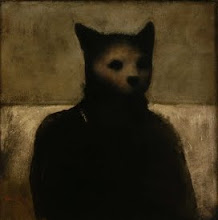
I would never boast about my knowledge of advanced aikido techniques--I love the handful of defenses I do know—but I am, in many respects, hooked upon the philosophies of the art’s founder Morihei Ueshiba. I have spent much time recently reading the words found in John Stevens’ translation of the Art of Peace. The words apply to any student of budo, or any student of life for that matter. The tone is simplistic and its content rich.
This post, however, need not focus past the manual’s title. I have been following Sensei Strange as he continues to unfold the meaning of aikido and deliberate upon the definition of this art form (see: kyu ryu link). I am enjoying his journey and will by no means solve his riddle in this post. Meanwhile, many of us have also been following the police use-of-force debate as demonstrated by one of Seattle’s police officers (go to either link: dojo rat or Japanese jiu-jitsu).
In both cases, the blogs have moved martial artists to reflect upon what it means to use action in a manner that will uphold the highest moral principles. And trying to define what those principles are. It seems the main issue in both subjects becomes the methods of using such action—both effective and minimal--to properly de-escalate a violent situation.
I see this as a good thing to debate and think about, which brings me back to The Art of Peace. The title, at first, seems like a contradiction, as, despite aikido’s defensive attributes, it is still an effective combat form. But when we look at the word Peace as in relation to Balance, I think the message gets a little bit clearer.
For if the police officer were trained in a proper manner—say in aikido or another more “combative” art—it would have been a much more Peaceable arrest.
This post, however, need not focus past the manual’s title. I have been following Sensei Strange as he continues to unfold the meaning of aikido and deliberate upon the definition of this art form (see: kyu ryu link). I am enjoying his journey and will by no means solve his riddle in this post. Meanwhile, many of us have also been following the police use-of-force debate as demonstrated by one of Seattle’s police officers (go to either link: dojo rat or Japanese jiu-jitsu).
In both cases, the blogs have moved martial artists to reflect upon what it means to use action in a manner that will uphold the highest moral principles. And trying to define what those principles are. It seems the main issue in both subjects becomes the methods of using such action—both effective and minimal--to properly de-escalate a violent situation.
I see this as a good thing to debate and think about, which brings me back to The Art of Peace. The title, at first, seems like a contradiction, as, despite aikido’s defensive attributes, it is still an effective combat form. But when we look at the word Peace as in relation to Balance, I think the message gets a little bit clearer.
For if the police officer were trained in a proper manner—say in aikido or another more “combative” art—it would have been a much more Peaceable arrest.
For as Ueshiba says, "The Art of Peace is to fulfil that which is lacking."

A much needed post. We all focus too much on how to cause harm and too little on how to avoid harming.
ReplyDelete